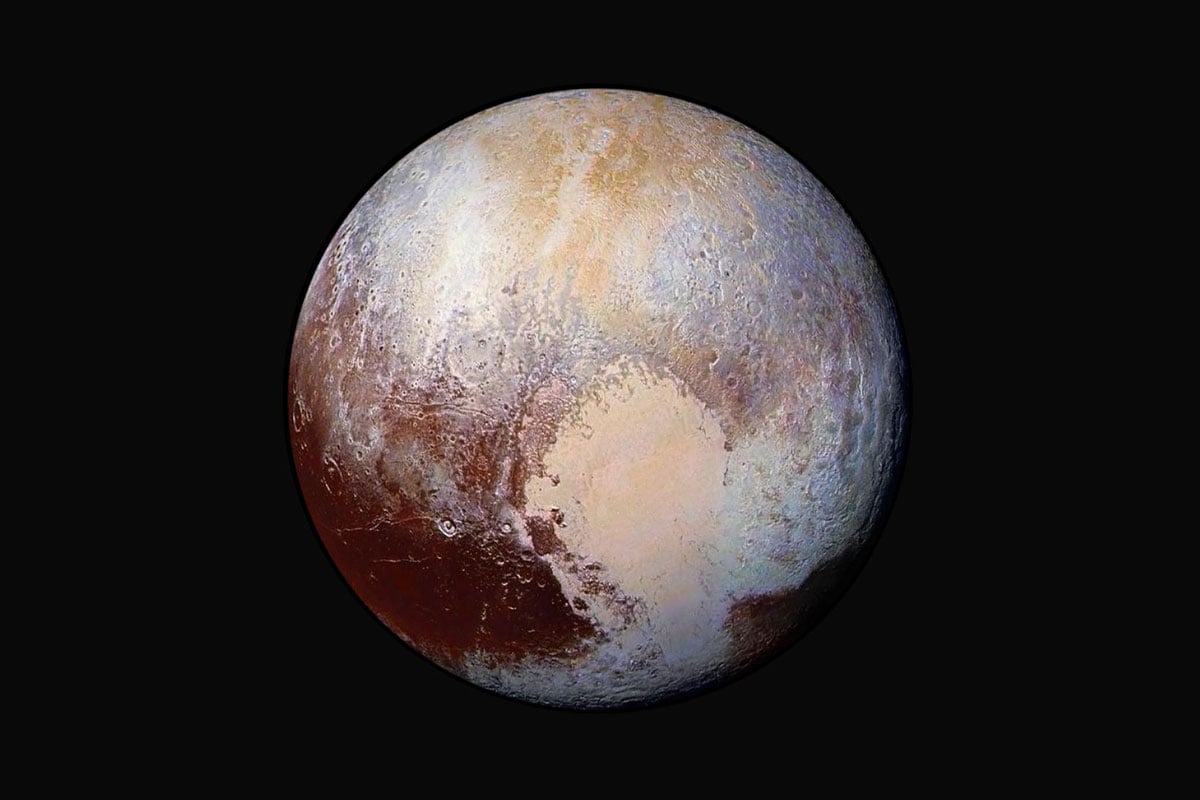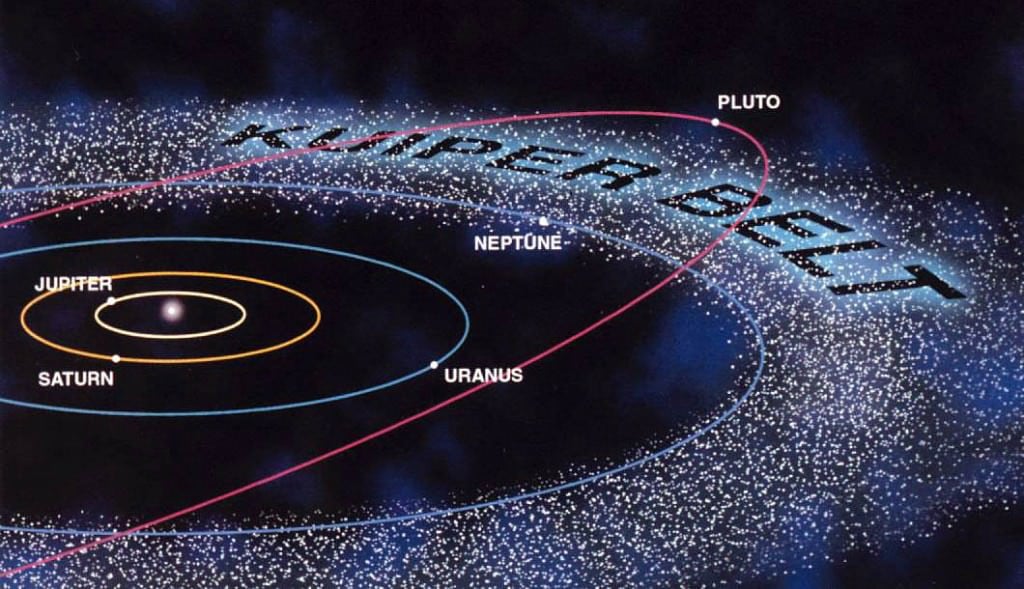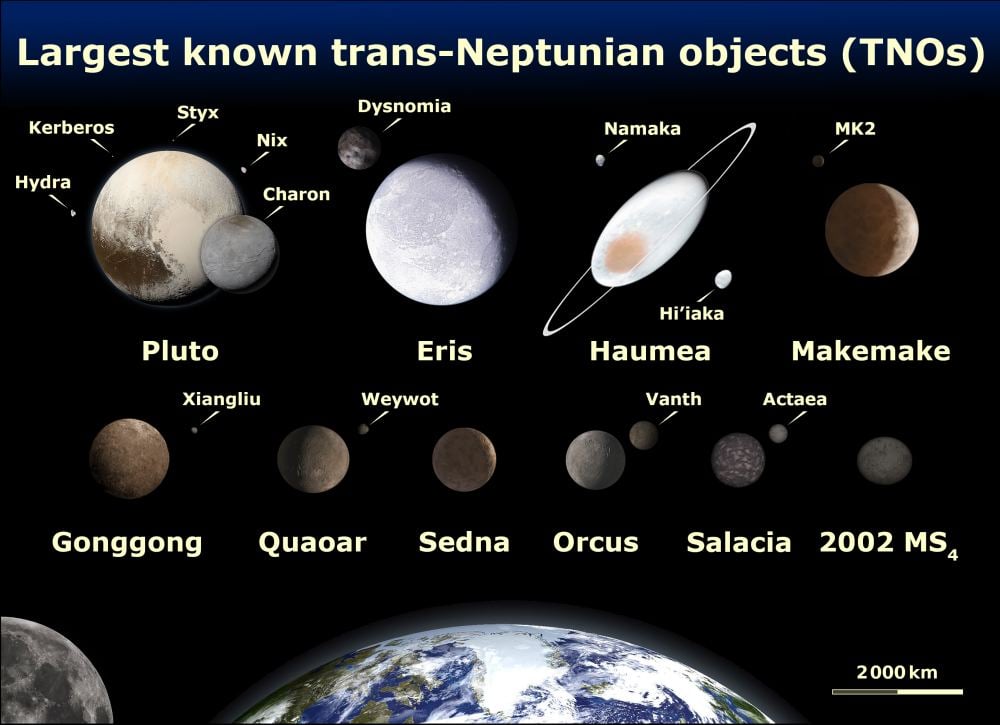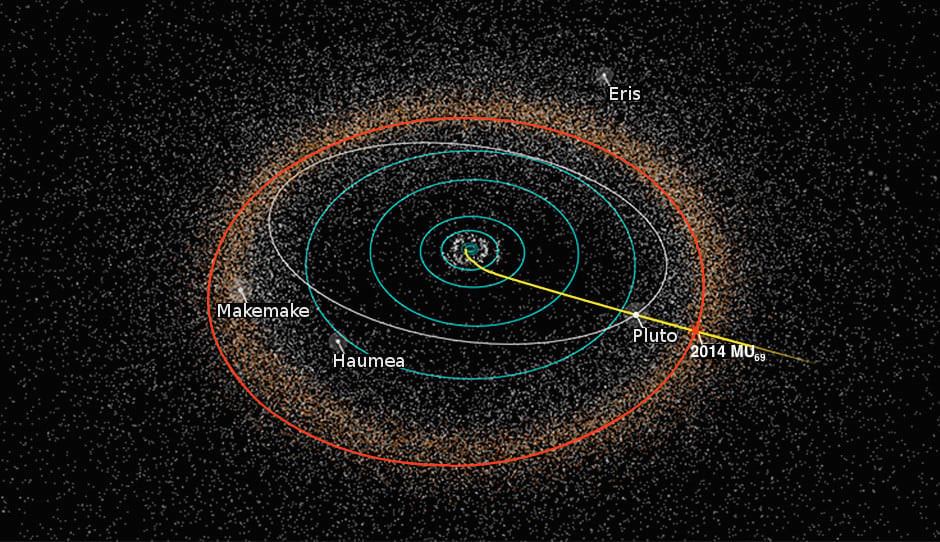In 1930, astronomer Clyde Tombaugh discovered the fabled "Ninth Planet" (or "Planet X") while working at the Lowell Observatory in Flagstaff, Arizona. The existence of this body had been predicted previously based on perturbations in the orbit of Uranus and Neptune. After receiving more than 1,000 suggestions from around the world, and a debate among the Observatory's staff, this newfound object was named Pluto - which was proposed by a young schoolgirl from Oxford (Venetia Burney).
Since that time, Pluto has been the subject of considerable study, a naming controversy, and was visited for the first time on July 14th, 2015, by the *New Horizons* mission. One thing that has been clear from the beginning is the nature of Pluto's orbit, which is highly eccentric and inclined. According to new research, Pluto's orbit is relatively stable over longer timescales but is subject to chaotic perturbance and changes over shorter timescales.
The research was conducted by Dr. Renu Malhotra, the Louise Foucar Marshall Science Research Professor at the University of Arizona's Lunar and Planetary Laboratory (LPL); and Takashi Ito, an associate professor at the Chiba Institute of Technology's Planetary Exploration Research Center (PERC) and the National Astronomical Observatory of Japan's (NAOJ) Center for Computational Astrophysics. The paper that describes their findings recently appeared in the *Proceedings of the National Academy of Sciences*.
To break it down, Pluto's orbit is radically different from those of the planets, which follow nearly circular orbits around the Sun close to its equator, projected outward (aka. the ecliptic). In contrast, it takes 248 years for Pluto to complete a single orbit around the Sun and follows a highly-elliptical orbit that is inclined 17° to the Solar System's ecliptic plane. The eccentric nature of its orbit also means that Pluto spends 20 years during each period orbiting closer to the Sun than Neptune.
The nature of Pluto's orbit is an enduring mystery and something that astronomers became aware of very shortly after it was discovered. Since then, multiple efforts have been made to simulate the past and future of its orbit, which revealed a surprising property that protects Pluto from colliding with Neptune. As Dr. Malhotra told Universe Today via email, this is the orbital resonance condition known as a "mean motion resonance":
"This condition ensures that at the time that Pluto is at the same heliocentric distance as Neptune, its longitude is nearly 90 degrees away from Neptune's. Later another peculiar property of Pluto's orbit was discovered: Pluto comes to perihelion at a location well above the plane of Neptune's orbit; this is a different type of orbital resonance known as the 'vZLK oscillation.'"
This abbreviation refers to von Zeipel, Lidov, and Kozai, who studied this phenomenon as part of the "three-body problem." This problem consists of taking the initial positions and velocities of three massive objects (since extended to include particles) and solving for their subsequent motion according to Newton's Three Laws of Motion and his Theory of Universal Gravitation - for which there is no general solution. As Dr. Malhotra added:
"In the late-1980s, with the availability of more powerful computers, numerical simulations revealed a third peculiar property, that Pluto's orbit is technically chaotic, that is, small deviations of initial conditions lead to exponential divergence of the orbital solutions over tens of millions of years. However, this chaos is limited. It has been found in numerical simulations that the two special properties of Pluto's orbit mentioned above persist over gigayear timescales, making its orbit remarkably stable, despite the chaos indicators."
For their study, Malhotra and Ito conducted numerical simulations of Pluto's orbit for up to five billion years into the future of the Solar System.
In particular, they hoped to address unresolved questions about the peculiar orbits of Pluto and other Pluto-sized objects (aka. Plutinos). These questions have been addressed by research conducted during the past few decades, such as "planet migration theory," but have only to a point. In particular, they hoped to address unresolved questions about the peculiar orbits of Pluto and other Pluto-sized objects (aka. Plutinos). In the past few decades, astronomers have attempted to address these questions with new theories (such as "planet migration theory") but were met with limited success.
In this hypothesis, Pluto was pulled into its current mean motion resonance by Neptune, which migrated during the Solar System's early history. A major prediction of this theory is that other Trans-Neptunian Objects (TNOs) would share the same resonance condition, which has since been verified with the discovery of large numbers of Plutinos. This discovery has also led to the more widespread acceptance of planet migration theory. But as Dr. Malhotra explained:
"Pluto's orbital inclination is closely linked to its vZLK oscillation. So we reasoned that if we could understand better the conditions for Pluto's vZLK oscillation, perhaps we could solve the mystery of its inclination. We started by investigating the individual role of the other giant planets (Jupiter, Saturn and Uranus) on Pluto's orbit."
To do this, Dr. Malhotra and Ito ran computer simulations where they simulated the orbital evolution of Pluto for up to 5 billion years that included eight different combinations of giant planet perturbation. These N-body simulations included interactions with:
- Neptune (---NP)
- Uranus and Neptune (--UNP)
- Saturn and Neptune (-S-NP)
- Jupiter and Neptune (J--NP)
- Saturn, Uranus and Neptune (-SUNP)
- Jupiter, Uranus, and Neptune (J-UNP)
- Jupiter, Saturn, and Neptune (JS-NP)
- Jupiter, Saturn, Uranus, and Neptune (JSUNP)
"We found no subsets of the inner three giant planets would do to recover Pluto's vZLK oscillation; all three - Jupiter, Saturn, and Uranus - were necessary," said Dr. Malhotra. "But what is it about these planets that [are] essential to Pluto's vZLK oscillation?" Dr. Malhotra added. "There are 21 parameters needed to represent the gravitational forces of Jupiter, Saturn, and Uranus on Pluto. This is a prohibitively large parameter space to explore."
To simplify these calculations, Dr. Malhotra and Ito collapsed these into a single parameter by introducing some simplifications. This included representing each planet with a circular ring of uniform density, a total mass equal to the planet's, and a ring radius equal to the planet's average distance from the Sun (aka. semimajor axis). As Dr. Malhotra indicated, this yielded a single parameter representing the effect of Jupiter, Saturn, and Uranus (J2), which was equivalent to the effect of an "oblate Sun."
"[W]e discovered a fortuitous arrangement of the masses and orbits of the giant planets that delineates a narrow range in the J2 parameter in which Pluto's vZLK oscillation is possible, a kind of 'Goldilock's zone,'" she said. "This result indicates that, during the planet migration era in [the] Solar System's history, the conditions for Trans-Neptunian objects changed in such a way as to promote many of them - including Pluto - into the vZLK oscillation state. It is likely that Pluto's inclination originated during this dynamical evolution."
These results are likely to have significant implications for future studies of the outer Solar System and its orbital dynamics. With further study, Dr. Malhotra believes that astronomers will learn more about the migration history of the giant planets and how they eventually settled into their current orbits. It could also lead to the discovery of a novel dynamical mechanism that will explain the origins of Pluto's orbit and other bodies with high orbital inclinations.
This will be especially useful to astronomers dedicated to the study of Solar System dynamics. As Dr. Malhorta noted, researchers in this field were beginning to suspect that evidence that might shed light on Pluto's orbital evolution might have been erased by the instabilities and chaotic nature of these same orbital mechanics. As Dr. Malhotra summarized:
"I think that our work raises new hope for making connection between present-day solar system dynamics and historical solar system dynamics. The origin of the orbital inclinations of minor planets throughout the solar system - including the TNOs - presents a major unsolved problem; perhaps our work will stimulate more attention to it. "Another point that our study underscores is the value of simple(r) approximations for a complicated problem: i.e., collapsing 21 parameters into a single parameter opened the door to getting at the essential dynamical mechanisms affecting the very interesting but difficult-to-understand orbital dynamics of Pluto and Plutinos."
Further Reading: PNAS
 Universe Today
Universe Today



